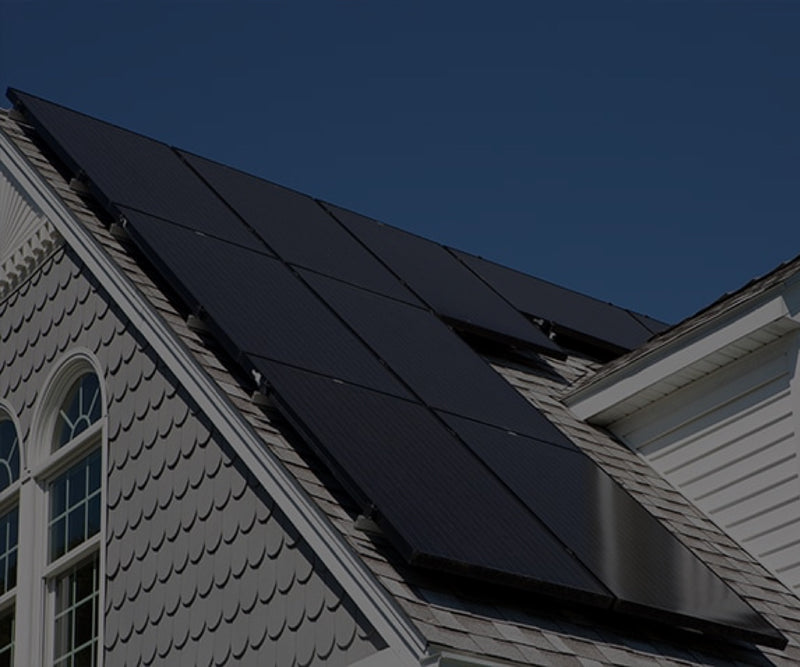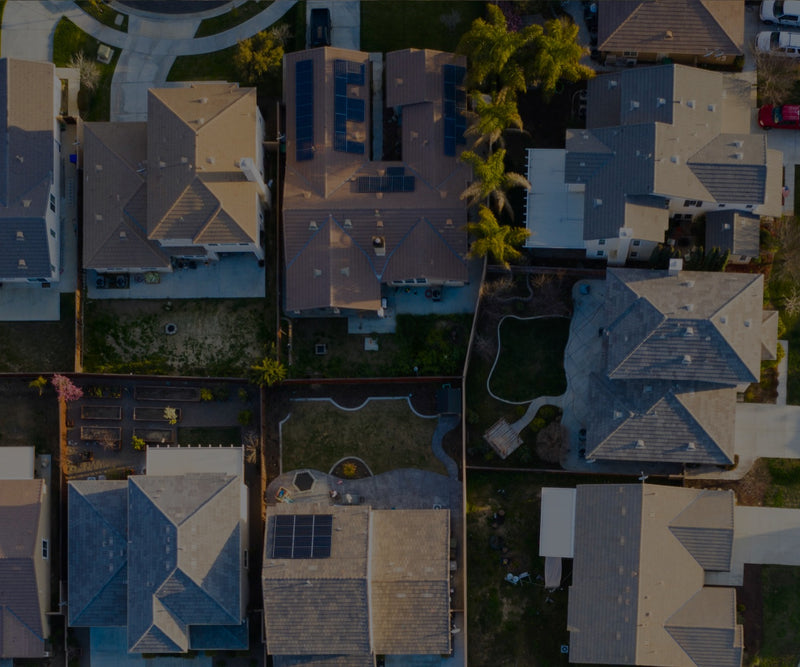The 3 Different Types of Solar Power Systems Explained

There are three basic types of solar power systems: grid-tie, off-grid, and backup power systems. Here’s a quick summary of the differences between them:
- Off-grid solar is designed to bring power to remote locations where there is no grid access.
- Off-grid systems require a battery bank to store the energy your panels produce. They are often paired with a generator to provide backup during long stretches without sunlight.
- A backup power system connects to the grid, but also includes batteries. Backup power systems (also called “hybrid systems” or "energy storage systems") provide backup power in case the grid goes down.
Each system type requires unique equipment that is compatible with the application, so understanding which one you need is the first step in the process of going solar.
Let’s take a closer look at the different types of solar power systems and make a comparison between them.
Grid-Tie Solar Power Systems
Grid-tie solar is, by far, the most cost-effective way to go solar. Because batteries are the most expensive component of any solar system, but grid-tie solar owners can skip them completely!
So how do grid-tie solar power systems work?
First, let’s define what we mean by the “grid”. The grid is the utility company’s network of equipment that brings electricity from the power plant to your home or commercial building. If a building is getting electricity from the power company, it is connected to the grid.
Grid-tie solar systems send the energy they generate into the grid, where it is stored for later use. Under a net metering agreement, the system owner receives credit for anything they generate, and they can make use of that energy at any time.
It’s kind of like a bank account: sending energy into the grid is like making a deposit, and using electricity is like withdrawing against your account balance. If you overdraft i.e. use more energy than you produce in a given month, the utility bills you for the difference. No added fees, thankfully.
Advantages of Grid-Tie Solar Power Systems
Grid-tie solar is the best option if you want to offset your electricity bill and save money over the life of your system.
Most grid-tie systems pay for themselves within 5-10 years. With solar panels warrantied for 25 years, grid-tie solar is the only option that reliably turns a profit for the system owner over the life of the panels.
Another advantage is that grid-tie systems can be smaller — you don’t need to generate 100% of your power each month. The grid can supply additional power beyond your production, which is useful when bad weather hampers the output of your panels, for example.
Some people choose to size a grid-tie system for a partial offset of their bill, with plans to expand the system later once their budget allows for it. Design requirements are less demanding than in an off-grid environment, where you are fully responsible for your energy needs.
Disadvantages of Grid-Tie Solar Power Systems
The main disadvantage of grid-tie systems is that they are still vulnerable to power outages.
"But wait," you might say, "if I’m generating power from sunlight, why does it matter if the grid goes down?"
Unfortunately, grid-tie systems are wired into the utility company’s infrastructure. In case of an outage, utility workers need to troubleshoot and fix the problem, and they can’t do that if connected solar systems are still energized and feeding power to the grid. For that reason, grid-tie solar systems are switched off during outages to allow utility workers to safely make repairs.
The solution? A hybrid system that connects to the grid, but draws on a battery bank in case of outages. We’ll cover those at the end of this article, but first...
Off-Grid Solar Power Systems
Off-grid solar is best for delivering power to remote locations where there is no access to a utility line.
Folks who live off the grid are solely responsible for generating their own electricity. This is usually accomplished by building an off-grid solar system that can cover a day’s worth of electricity usage, with a backup generator to supplement production during long stretches of bad weather.
Advantages of Off-Grid Solar Power Systems
The main draw of off-grid solar is the freedom to live wherever you want. It doesn’t matter if your property is 100 miles from civilization: if you have sunlight, you have a reliable way to generate power.
Although off-grid solar components are more expensive, there can be some hidden financial benefits to living off the grid that can offset those higher costs. Undeveloped plots of land located far off the grid will naturally cost less than a prime grid-tie location. In many cases, the lower land costs do more than enough to offset the higher cost of going solar off the grid.
Disadvantages of Off-Grid Solar Power Systems
Pretty simple, really: the need for a battery bank makes off-grid solar significantly more expensive.
However, it’s often wiser to invest in an off-grid solar system than it is to run a power line to a remote location. While an off-grid system may cost more than a grid-tie system, it is still more frugal than other remote power solutions, like running a new utility line or relying on a gas generator.
One way to keep costs down is to use propane appliances where possible to reduce your demand for electricity. Opting for a propane stove, clothes dryer, wall heater and on-demand water heater means you can get away with a smaller inverter and smaller battery bank.
It also helps to stagger electricity usage — for example, running laundry and the dishwasher at different times — to reduce your peak power consumption and relieve some of the costs of energy storage.
Backup Solar Power Systems
If you live on the grid, but you want protection from power outages, your best bet is a battery backup system.
Backup power systems connect to the grid, and function like a normal grid-tie system on a day-to-day basis. However, they also feature a backup battery bank that takes over in case of outages.
When grid power goes out, your inverter automatically disconnects from the grid and draws on energy stored in your battery bank, which will keep your appliances running when the grid goes down.
Battery backup systems have been gaining popularity recently, especially in light of news stories covering grid failures in Texas and wildfires interrupting service in California. They are also favored in climates that are vulnerable to fierce storms and natural disasters like hurricanes and tornadoes. The backup battery bank offers peace of mind to shield the owner from blackouts.
Lastly, battery backup is valuable if you have appliances which require uninterrupted power. If you are running a well pump, for example, service interruptions can be a massive headache. Adding backup power to your grid-tie system will keep these critical appliances running during a blackout.
Can I start with grid-tie solar and add battery backup later?
Yes, but it’s much easier to do if you plan for expansion in advance. Traditional grid-tie inverters like the SMA Sunny Boy aren’t equipped to handle a battery bank connection. Those can be paired with the SMA Sunny Island inverters to upgrade a hybrid battery based system, but you'll spend more coupling a second inverter to your system.
Hence, iIf you think that you may want to add battery backup to your system down the line, we recommend a solution like the Sol Ark series, a string inverter which is engineered to handle all three applications: grid tie, off grid, and battery backup.
There's also the Enphase Ensemble, a “grid-agnostic” micro-inverter system that is designed to seamlessly swap between grid power and backup power.
You’ll be able to start with Enphase IQ micro-inverters for grid-tie use, with the option to add the Encharge storage system later without any compatibility issues.
Watch this 5-minute video from Enphase to see how it works.

Solar Calculator

Which Solar Kit Do I Need?
GET STARTED WITH SOLAR
WE’LL HELP YOU FIGURE OUT YOUR SOLAR NEEDS!
Fill out the form for a complimentary solar quote that includes a custom satellite layout, system design and a breakdown of total project cost and estimated savings.
